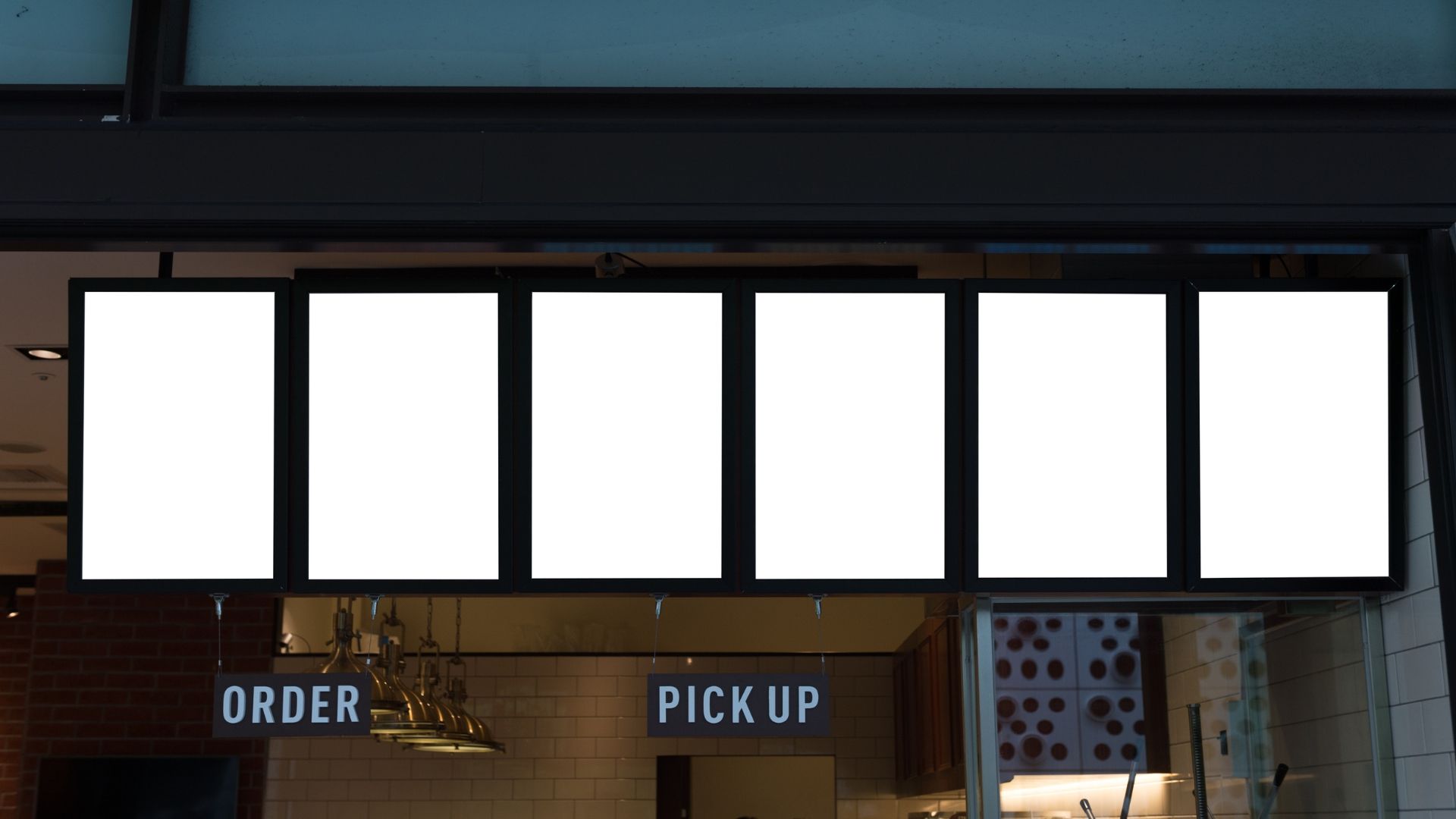The Ultimate Guide to Digital Menu Benefits: Increase Sales and Customer Satisfaction
Introduction
Digital menus are dynamic displays used in restaurants to present menu items, promotions, and other relevant information. Typically, these digital menu boards are powered by specialized software that allows restaurant owners to update content easily and frequently. They often include features such as high-resolution images, animations, and interactive elements to engage customers.
Restaurants are increasingly adopting digital menu boards for several compelling reasons:
- Enhanced Visual Appeal: Digital menus can incorporate bright colors, animations, and videos, making the dining experience more engaging.
- Ease of Updates: With digital signage, you can quickly change menu items, prices, and promotions without the need for reprinting physical menus.
- Consistency and Brand Management: Maintaining a uniform marketing aesthetic across multiple locations is easier with digital signage.
- Customer Interaction: Interactive elements on the display can make the ordering process more enjoyable.
The trend towards digital menus is growing as restaurants recognize these benefits. Quick-service restaurants (QSRs), cafes, and even fine-dining establishments are leveraging this technology to enhance customer experiences and streamline operations.
1. Enhanced Customer Experience
Digital menus significantly improve the customer experience by using animations and visuals. These elements make the menu more interesting, grabbing attention and creating a memorable experience. High-quality pictures of dishes, bright colors, and smooth transitions can attract customers to explore the menu more.
Interactive parts on digital menu displays encourage customer involvement. Features like touchscreens allow diners to see ingredient details, personalize orders, and get nutritional information right away. This level of involvement not only educates but also entertains, making the ordering process fun.
A visually appealing and user-friendly interface is important. A well-organized layout with clear categories helps customers find what they want quickly. Consistent branding across digital menus reinforces recognition and trust. Easy-to-read fonts, smart use of empty space, and intuitive navigation contribute to a smooth experience.
Key benefits:
- Use of animations and visuals for engagement
- Interactive elements for real-time customer interaction
- Visually appealing and easy-to-navigate interfaces
These features together improve the dining experience, making it more enjoyable and efficient for customers.
2. Increased Sales Potential
Digital menu boards have a significant impact on sales and profitability for restaurants. The dynamic nature of digital signage grabs customers’ attention, leading to increased sales and improved profit margins. By frequently updating the menu to reflect popular items or limited-time offers, restaurants can drive higher sales volumes.
Maintaining brand consistency is another remarkable advantage. Digital menus ensure that branding elements such as logos, color schemes, and taglines are uniformly displayed across all locations. This consistency reinforces brand identity and helps in promoting key offerings effectively.
Strategies to boost sales through digital menus include:
- Highlighting Popular Items: Use digital signage to spotlight best-sellers or chef’s specials, making them more appealing.
- Upselling Opportunities: Incorporate suggestive selling by pairing main dishes with sides or beverages.
- Time-Sensitive Promotions: Display exclusive deals during specific times of the day to entice customers.
Integrating these strategies into your digital menu can lead to a noticeable increase in customer spending and overall profitability.
3. Cost Effectiveness
The cost effectiveness of digital menu boards vs traditional paper menus becomes evident when you consider the long-term benefits. Traditional printed menus require frequent reprints due to changes in pricing, seasonal offers, or updated menu items. These recurring printing costs can accumulate significantly over time.
Digital menu boards eliminate these expenses by allowing instant electronic updates. This reduces the need for physical materials and minimizes labor costs associated with manual menu changes. Additionally, the ability to remotely update multiple locations simultaneously saves time and cuts down on travel expenses.
Investing in digital signage can lead to lower operational costs and higher profit margins. Digital menus enhance visual appeal through high-resolution displays and animations, which can attract more customers and boost sales. Restaurants often see a return on investment through increased sales driven by engaging content and dynamic promotions.
Key advantages include:
- Reduced Printing Costs: No need for constant reprints.
- Time Efficiency: Quick updates across all locations.
- Labor Savings: Fewer manual menu adjustments.
- Attractive Displays: Engaging visuals draw more customers
Digital signage provides a cost-effective solution that supports profitability while maintaining an appealing dining experience for patrons.
4. Flexibility and Adaptability
Digital signage systems are great for offering flexible menus that can be easily changed and updated. Unlike traditional printed menus that need to be reprinted and distributed, digital menus allow for instant modifications. This is especially important for restaurants that often update their menu or adjust prices based on market conditions.
Benefits of using Digital menu software
One of the main advantages of using digital menu software is the ability to manage content seamlessly across multiple locations. This is particularly beneficial for restaurant chains as it allows them to maintain a consistent menu presentation while also catering to local preferences or running seasonal promotions. With a centralized system, updates can be pushed out in real-time, ensuring that all locations have the latest information.
Some specific advantages of having adaptable digital menus include:
- Real-time Updates: You can instantly change prices, add new items, or remove discontinued offerings without any delay.
- Localized Content: It’s possible to customize menu items and promotions based on regional tastes without compromising brand consistency.
- Seasonal and Time-Based Menus: Switching between breakfast, lunch, and dinner menus or updating seasonal specials can be done easily with automated scheduling.
By making use of these flexible systems, you’ll be able to improve operational efficiency and create a more engaging dining experience for your customers.
Choosing the Right Digital Menu Solution for Your Restaurant
Selecting a digital menu board system involves several critical considerations to ensure it meets your restaurant’s unique needs.
Key Considerations for Selecting a Digital Menu Board System:
- Scalability: Choose a system that can grow with your business. Whether you plan to expand to multiple locations or add more screens, the digital menu solution should easily accommodate these changes.
- Ease of Use: The system should be user-friendly, allowing staff to make quick updates without extensive training. Look for intuitive interfaces and straightforward content management tools.
Partnering with a Reliable Vendor:
- Installation and Setup: A reliable vendor will provide comprehensive installation services, ensuring the digital menu boards are set up correctly and efficiently.
- Ongoing Support: Continuous support is crucial. Partner with a vendor that offers robust post-installation services, including troubleshooting, regular maintenance, and software updates.
Considering these factors will help you choose a digital menu solution that enhances operational efficiency and improves customer satisfaction.
Conclusion
Using digital menus brings convenience and ease of use for both restaurant operators and customers. Installing digital signage like DSA Signage can completely change your restaurant, resulting in:
- Improved efficiency
- Higher customer satisfaction
- Increased sales
Quick-service restaurants (QSRs) especially benefit from quicker ordering processes and shorter wait times.
To start using digital menus:
- Assess what your establishment specifically needs.
- Select a reliable vendor with a proven track record in the industry.
- Prioritize scalability and user-friendliness for long-term success.
The future of digital signage in dining looks bright, with continuous improvements making customer interaction and operational effectiveness even better. By embracing these modern solutions, you position your restaurant as an innovative leader, ready to meet changing customer expectations.
Use this information to take the next step in transforming your restaurant’s menu experience.
FAQs (Frequently Asked Questions)
what are digital menus and how do they work in restaurants?
Digital menus are a form of restaurant digital signage that provide a brief explanation of the menu items using visuals and animations. They work by displaying the menu offerings on digital screens, allowing for easy updates and changes.
How do digital menus contribute to a more engaging customer experience?
Digital menus contribute to a more engaging customer experience by using animations and visuals to create a memorable experience. They also encourage customer interaction through interactive elements on the menu display, while highlighting the importance of a visually appealing and user-friendly menu interface.
What impact do digital menu boards have on driving sales for restaurants?
Digital menu boards have a significant impact on driving sales and improving profitability for restaurants. They help maintain brand consistency and promote key offerings through consistent digital signage, while also providing strategies for leveraging digital menus to upsell or highlight popular items.
How do the cost benefits of digital menu boards compare to traditional printed menus?
The long-term cost benefits of adopting digital menu boards versus using traditional printed menus are compared, showing how investing in digital signage can lead to lower operational costs and higher profit margins.
What is the flexibility of digital signage systems in adapting to menu changes and updates?
Digital signage systems offer flexibility in easily adapting to menu changes and updates. Additionally, using menu management software allows for seamless content changes across multiple locations, providing benefits in terms of adaptability.
What factors should be considered when choosing a digital menu board solution for a restaurant?
Factors to consider when choosing a digital menu board solution include scalability, ease of use, and the importance of partnering with a reliable vendor or provider for installation and ongoing support.
Why should restaurants embrace the benefits of digital menus?
Restaurants should embrace the benefits of digital menus due to their convenience and ease of use, as well as their potential impact on quick-service restaurants (QSRs). The future of digital signage in the dining industry is also discussed, providing next steps for implementation.










